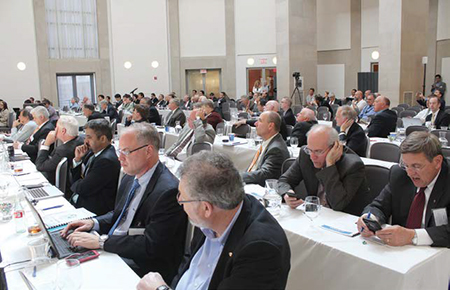Why Move to ATSC 3.0?

Mark Richer Why move to ATSC 3.0? There are many answers to that question, and the hundreds of people who attended the annual ATSC Broadcast Television Conference and ATSC 3.0 Boot Camp earlier this month came away with new insights about how broadcasters will reach tomorrow’s audience hungry for local news, emergency alerts, favorite shows, and a seamless experience that merges broadcasting with the Internet.
Indeed, the move to an IP-based TV broadcast system is a foundation for the future of television.
Quite simply, ATSC 3.0 will provide new business opportunities for broadcasters and new services and products for consumers. Remember that the ATSC DTV Standard, now referred to as ATSC 1.0, is 20 years old! It incorporated technologies that are about 25 old. Industries prosper by leveraging new technology—and broadcasting is no different.
Any one of us involved in the development of 3.0 has a list of the benefits of the next-generation broadcast television standard. For the most part, all of have the same system traits on the list, but we might differ in our ordering of the categories.
For me, the number one characteristic of 3.0 is its flexibility, with a broad set of technical parameters allowing a wide range of potential services now and in the future.

ATSC enjoyed record attendance for its annual meeting earlier this month. We are building flexibility into every layer of the system including the use of IP or Internet Protocol—which is inherently flexible and interoperable. The whole world is IP and this positions broadcasting as a powerful part of the communications infrastructure of the future. That means lower-cost equipment and new distribution and device opportunities. Think of broadcasting as a “High Power-High Tower” nationwide IP network.
The 3.0 physical layer provides a myriad of options for broadcasters to configure robust transmission and reception of services to a variety of devices for indoor, handheld and mobile services. Of course, the ATSC 3.0 video and audio coding systems will provide broadcasters with various options to customize their service offerings.
An equally important aspect of ATSC 3.0 is spectral efficiency. ATSC 3.0 can provide new options for broadcasters and policymakers to consider as the incentive auction proceeds and the subsequent spectrum repack is completed. Giving broadcasters flexibility to optimize the auction is good for all, including the government.
And ATSC 3.0 will provide the technical tools for broadcaster collaboration in a given market—to optimize use of bandwidth.
For broadcasters interested in sharing a channel, 3.0 will allow you to offer your current services such as HDTV and multicast standard definition on half a channel. For broadcasters who are not interested in sharing a channel, 3.0 allows you to offer lots of services like Ultra HDTV with immersive audio, multiple mobile HDTV streams and interactive TV. Of course, some broadcasters may want to share a channel as a transition step and move to a full channel of ATSC 3.0 services in the future.
An unprecedented amount of participation by hundreds of volunteers is propelling ATSC 3.0 forward. ATSC member organizations represent the broadcast, broadcast equipment, motion picture, consumer electronics, computer, cable, satellite, and semiconductor industries.
As an international, non-profit organization developing voluntary standards for digital television, we welcome your participation in the drive to ATSC 3.0.
Mark Richer is the president of the Advanced Television Systems Committee.
Get the TV Tech Newsletter
The professional video industry's #1 source for news, trends and product and tech information. Sign up below.
